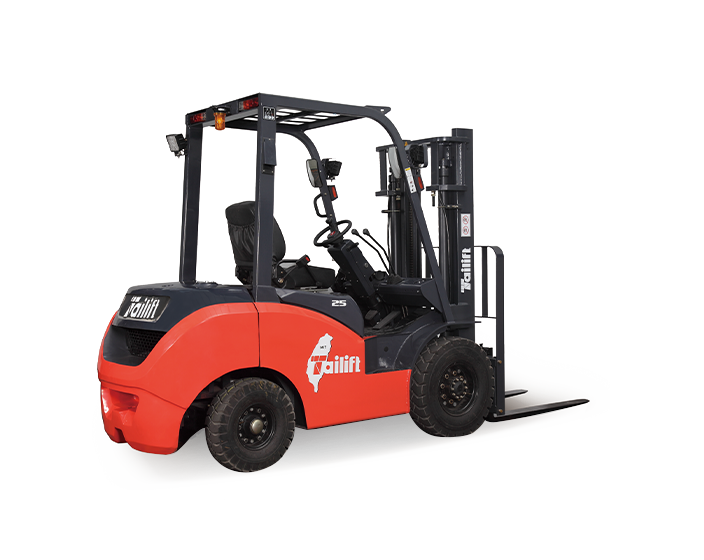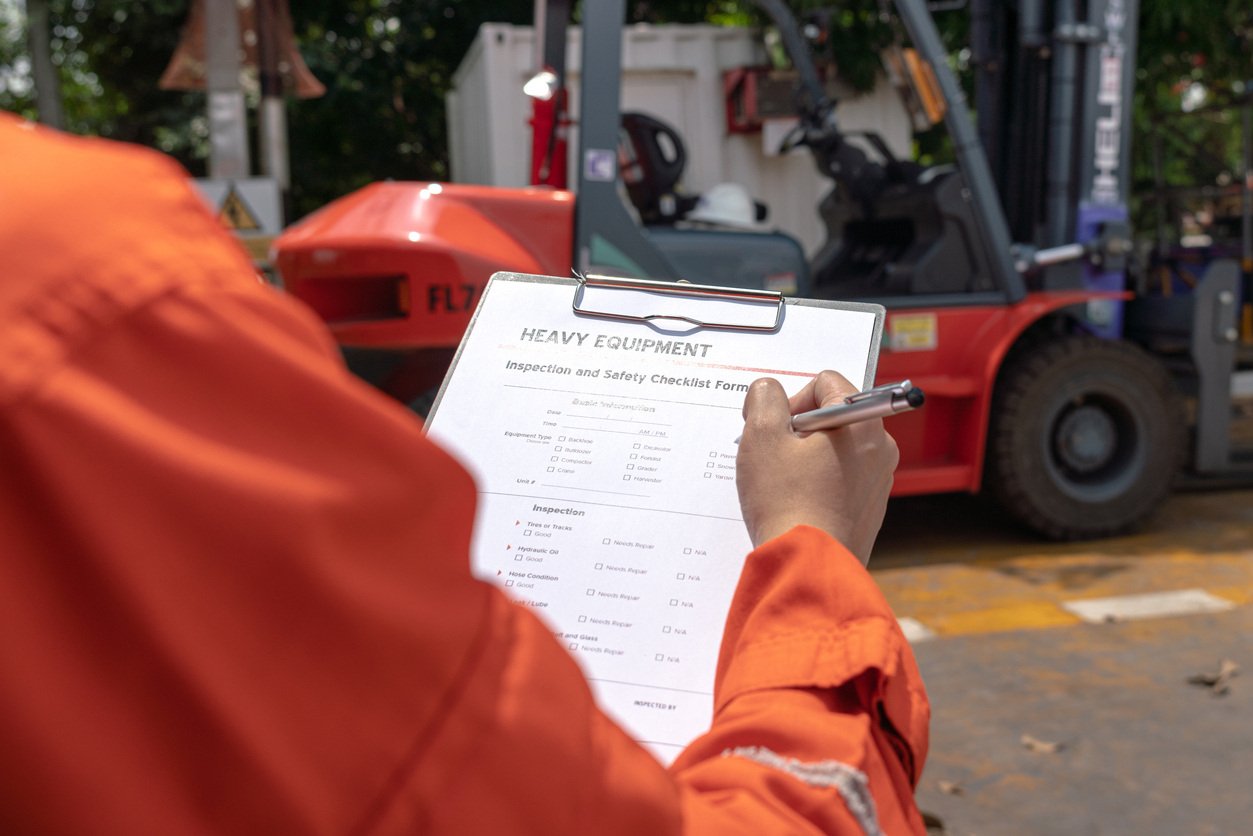
How Cold Weather Affects Your Forklift Fleet and What You Can Do
As winter sets in and temperatures drop, managing a forklift fleet becomes more challenging. Cold weather can affect both mechanical and electronic components, particularly in electric forklifts, leading to increased wear, lower efficiency and potential safety hazards if not properly managed. To avoid downtime and ensure safe operations, it’s essential to understand how cold temperatures impact your forklifts and take steps to minimize these effects. In this blog, we’ll explore the most common cold-weather forklift risks and provide practical solutions to help keep your fleet running smoothly throughout the winter.
5 Common Cold Weather Forklift Risks
-
Forklift Battery Efficiency
The forklift battery is especially vulnerable in cold weather. Whether you’re running an electric forklift or an internal combustion model with electric components, cold temperatures can significantly reduce battery performance. Allow us to briefly explain: low temperatures slow down the chemical reactions in the forklift battery, making it less efficient and harder to hold a charge. This can lead to slower operations, reduced productivity and more frequent charging, which ultimately shortens the battery’s lifespan. In fact, cold weather can reduce battery output by 20 to 50 percent. For electric forklifts, this means shorter run times and lower lifting capacity. Internal combustion forklifts also rely on battery power for ignition and electronic controls. In cold conditions, these components can struggle to function properly, resulting in hard starts or even failures in the electronic systems. Proper forklift battery care is essential to maintain efficiency and prevent breakdowns during the colder months.
What You Can Do
- Store Batteries in Warmer Conditions: Whenever possible, keep forklift batteries in a temperature-controlled space. Storing them in a warm environment when not in use helps maintain their charge and efficiency.
- Battery Management System (BMS): Consider implementing a battery management system to monitor battery performance, especially during the colder months. A BMS can alert you to any decline in performance before it turns into a serious issue.
- Cold-Weather Chargers: Invest in chargers designed for cold weather. These specialized chargers operate effectively in lower temperatures and help prevent overcharging, which is a common risk when batteries are cold.
- Pre-Heat Batteries: For electric forklifts, use battery heaters or let the batteries warm up before operating the forklift. This can help avoid underperformance.
-
Hydraulic System Performance
The hydraulic system of a forklift plays a central role in lifting and lowering loads. However, cold weather can have a negative impact on the fluid used in this system. When temperatures drop, hydraulic oil tends to thicken, which reduces the forklift’s responsiveness and slows down lifting operations. If this issue is not addressed, it can lead to increased wear on components, decreased safety and operational inefficiency. Thicker hydraulic fluid creates internal friction, lowering the overall efficiency of the forklift. In extremely cold conditions, this can result in sluggish operation or even a complete failure of the hydraulic system. When the hydraulic fluid becomes too viscous, it doesn’t easily circulate through the system. This causes delays in movements and makes it more difficult to handle loads safely.
What You Can Do
- Switch to Low-Viscosity Fluids: Consider using hydraulic oils specifically designed for low temperatures. These fluids are thinner and better suited for winter conditions, which improves flow and reduces wear on the hydraulic system.
- Perform Regular Fluid Checks: It’s essential to frequently check your forklift’s hydraulic fluid levels during cold weather. If the levels drop too low, the system may not function properly, and the cold can make the problem worse.
- Warm-Up the Forklift Before Use: Let your forklifts warm up before starting work. Running the engine for a few minutes before using the hydraulics helps the fluids circulate and ensures that the system operates efficiently.
-
Tire Traction and Forklift Safety
One of the biggest concerns during cold weather is ensuring forklift safety on icy or slippery surfaces. Cold temperatures can affect the traction of forklift tires, especially outdoors. Even indoor areas, like refrigerated warehouses or spaces near open doors, can be hazardous due to cold air and ice buildup. Forklifts may specifically struggle with tire traction if they are using worn or unsuitable tires. For example, hard rubber tires can lose their grip on icy surfaces, increasing the risk of accidents. Additionally, forklift operators need to exercise extra caution when turning or braking, as a sudden loss of traction can lead to tip-overs.
What You Can Do
- Install Winter-Appropriate Tires: If your forklifts operate in cold conditions or on icy surfaces, consider switching to tires designed for better grip. Pneumatic tires, for example, offer better traction compared to solid tires in these environments.
- Monitor Tire Pressure: Cold weather can cause tire pressure to drop, making it harder for forklifts to maintain traction. Regularly check tire pressure and inflate them as needed to ensure safety.
- Increase Operator Training: Forklifts are only as effective as the operators who drive them. Winter safety is critical, so make sure your operators are trained to manage seasonal risks, including the hazards posed by icy surfaces.
-
Fuel Systems and Cold Starts
Cold weather can seriously impact the fuel system of diesel forklifts. These forklifts often struggle to start in low temperatures, and even when they do, they have trouble maintaining fuel efficiency. In the cold, coolant hoses can freeze or develop leaks, and diesel fuel can thicken and gel, preventing it from flowing smoothly through the fuel lines. The diesel becomes so thick that it cannot pass through the fuel filters. Moreover, the cold places additional strain on ignition systems, making it harder for engines to start.
What You Can Do
- Use Winter-Grade Fuel: Make sure to switch to winter-blend fuels that are less likely to gel in cold temperatures. For example, winter diesel includes additives designed to prevent freezing in harsh climates.
- Inspect Coolant Systems: Regularly check and maintain the coolant systems in your fuel-powered forklifts to ensure that the radiator and hoses are in good condition. This helps prevent issues caused by freezing temperatures.
- Pre-Heat Fuel Systems: Utilizing a block heater or other pre-heating device for your fuel-powered forklifts can make cold starts easier. This practice reduces strain on the engine during cold weather operations, helping to ensure smoother performance
-
Forklift Safety and Operator Comfort
In addition to the mechanical issues caused by cold weather, it’s crucial to consider operator comfort and forklift safety. Operator safety can be compromised when they are distracted or uncomfortable due to low temperatures. Factors such as fogged-up windshields, cold metal controls and frigid air can lead to reduced concentration, slower reaction times and an increased risk of accidents. Cold weather not only impacts the forklift’s performance but also affects the safety of the entire operation. Poor visibility from frosted windows and diminished focus from prolonged exposure to cold can heighten the chances of accidents. Moreover, forklift operators are at a higher risk of fatigue and discomfort when working in the cold for extended periods, which can negatively affect their decision-making and response times.
What You Can Do
- Provide Cold Weather Gear: Ensure your forklift operators have the right clothing and equipment, such as insulated gloves and jackets, to keep warm and safe while working.
- Encourage Frequent Breaks: Encourage your operators to take regular breaks. This helps them stay focused and reduces the risk of fatigue and discomfort, which can lead to accidents.
- Use Defrosting Equipment: Equip your forklifts with defrosting systems to prevent windows from fogging up. Clear visibility is essential for safe operation.
Minimize Forklift Downtime with Preventative Maintenance
Operating forklifts in cold weather can be challenging, whether you’re managing a large fleet or a small operation. By being proactive with preventative maintenance, you can tackle common issues like decreased battery performance, hydraulic inefficiency and forklift safety. This strategy helps reduce risks and keeps your forklifts running smoothly. At Tailift Canada, we are dedicated to supporting your operations with high-quality equipment and expert advice tailored to your needs. Our knowledgeable team is ready to help you navigate the winter months, ensuring your forklift fleet remains reliable and efficient. Reach out to us today for guidance and solutions that will keep your operations moving, no matter the weather.
